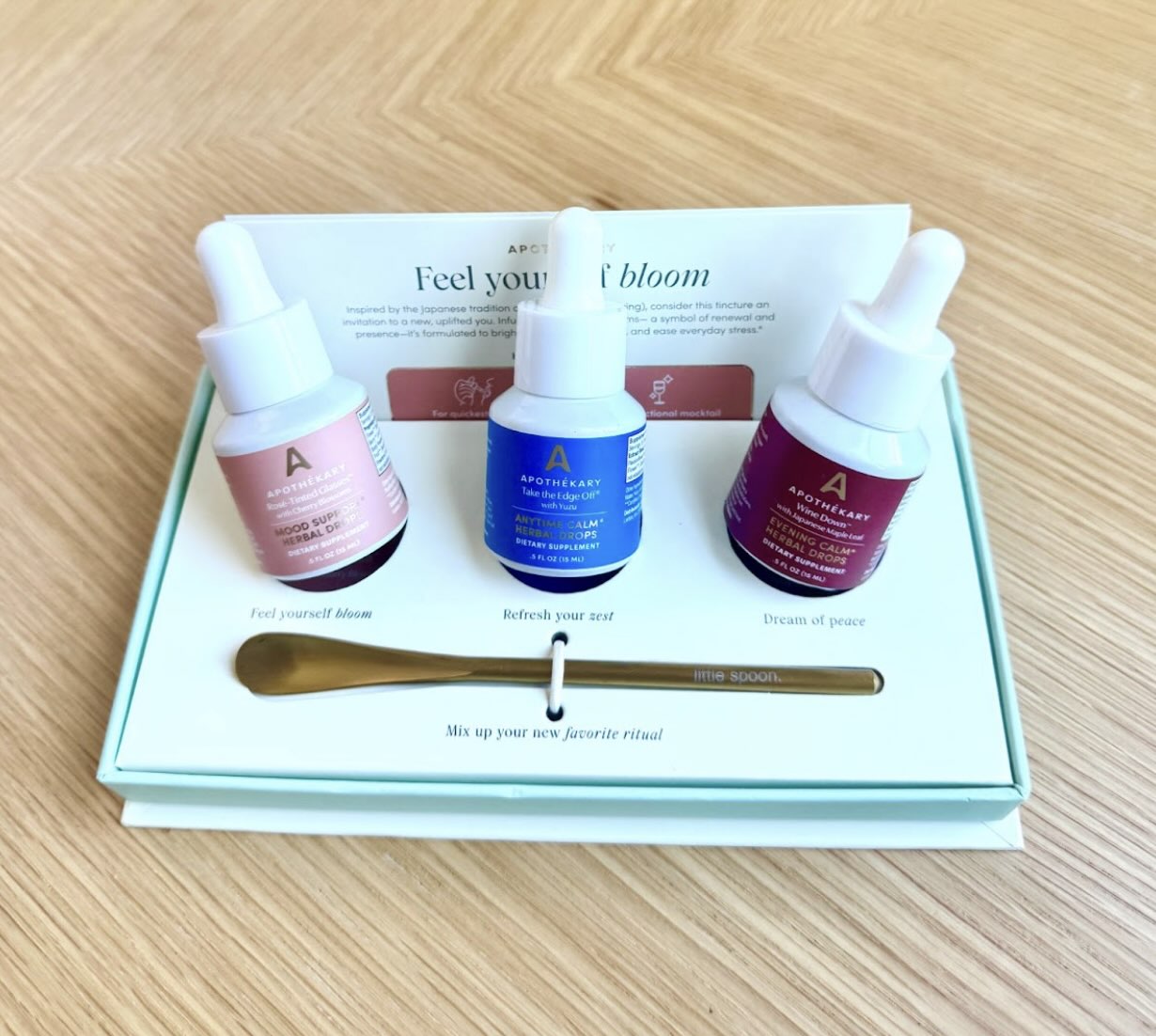Our team is dedicated to finding and telling you more about the web’s best products and experiences. If you purchase through our links, we may receive a commission. Our editorial team is independent and only endorses products we believe in.
We like
We don't like
As a former dancer, I’ve always been active. I have busy limbs and a brain with too much dopamine. But now, as a 42-year-old working mom of two, I’m lucky if I can squeeze in a 30-minute walk or 20 minutes of strength training––which means I’m always looking for ways to amplify my workouts.
In full transparency, I came to weighted vests by way of perimenopause. Sexy, I know, but stick with me. About 30% of my friends are suddenly complaining of night sweats and frozen shoulder, brain fog and restless sleep. All of them, in their mid-to-late 40s, are asking themselves, “Could this be happening? Already?!”
Luckily (or not), I am that friend: The one who latches onto a topic and devours every piece of information I can find, diving headfirst into any podcasts that might reveal answers to the questions women find illusive, even––especially––when it comes to our own bodies. That’s how I became a disciple of Our Lady of Menopause Education, Dr. Mary Claire Haver, a board-certified Obstetrics and Gynecology specialist with a multitude of accolades, author of the best-selling, The New Menopause, and a devoted advocate of the weighted vest.
After hearing her tout the benefits of this musculoskeletal marvel, I decided to give it a spin––and ask a few experts: Is it worth it?
Pros of Wearing a Weighted Vest
“Weighted vests have gained popularity for good reason—they offer a simple yet powerful way to add resistance to bodyweight movements, increasing intensity without compromising form,” says celebrity trainer Jay Cardiello, Kailo Nutrition's In-house fitness advisor. He explains that growing interest, especially among women, stems from research highlighting the benefits of resistance training for bone density, cardiovascular health, and metabolic function. “Studies have shown that mechanical loading through resistance—like that from a vest—can help slow or even reverse bone loss and improve muscular strength and balance.”
Joyce Schulman, a CPT focusing on women, wellness, and longevity, says it’s also great for burning calories. “Rucking, or walking with a weighted load, increases calorie burn by adding resistance to your walks. While the exact increase in caloric output varies based on a host of factors…research suggests that rucking can torch between two-and-three times the calories of a typical walk. And the added resistance helps to build muscle and more muscle equals increased metabolism, even at rest.”
Beyond the burn, however, weighted vests can be especially beneficial for women because, according to Certified Menopause Coaching Specialist, Sarah Fuhrmann, it all comes down to our bones. “During menopause, the body’s natural loss of estrogen accelerates muscle loss (sarcopenia) and bone demineralization—especially at the hips and spine. That puts women at increased risk of falls, fractures, and long-term disability.” Fuhrmann says studies have also shown that adding a weighted vest, even just to your walks, can improve balance, ankle strength, and bone health markers in postmenopausal women.
“[Weighted vests] are low-barrier and high-return—especially for women who want results without high-intensity or gym-heavy routines.”
Cons of Wearing a Weighted Vest
While weighted vests can be for just about everyone, there are a few things to keep in mind. Elizabeth Tringali, PA-C and Functional Medicine Provider (as well as a former body builder), cautions, “If you begin too heavy, or you progress in weight too fast, it can affect the knees, joints, and your posture.” She doesn’t recommend a weighted vest during high-intensity exercise or during core work, and says that patients with osteoporosis, arthritis, or injury should speak to their physician before beginning with a weighted vest.
Fuhrmann adds that you should stay away from weighted vests if you have poor balance or mobility or a weak pelvic floor. She also advises against using a weighted vest with high-impact movements. “Jumping or sprinting is advanced and not for everyone,” she says. “Also, skip the vest if you're doing exercises like yoga where the added load could compromise your posture or joint alignment.”
How To Choose Your Weighted Vest
Unanimously, everyone I spoke to advised that, when starting out, choose a weighted vest that’s roughly 4–6% of your body weight, which is likely somewhere between 8 to 15 lbs for most women. Start with low-impact activities like walking or bodyweight exercises, and always listen to your body.
“Focus on good posture and movement mechanics before progressing to more challenging routines,” says Fuhrmann. “Use it 2–3 times a week at first, and avoid wearing it all day. Remember, it’s a workout tool, not a lifestyle accessory.”
Weighted Vest Is My Identity Now
To say that I’m obsessed with my weighted vest might be an overstatement––but not by much. I’m always looking for ways to level up my workouts with tactics that are both accessible and sustainable, if for no other reason than that I easily grow bored. My weighted vest is a simple solution to amping up everything from walking the dog to bodyweight squats.
I started out with the OMORPHO 5 lb. G-Vest on my outdoor walks and could instantly feel the difference in my heart rate and endurance. (Sometimes I’m pushing a double stroller with two kids, roughly 65lbs.––and often uphill––so 5 lbs. was an optimal starting point for my current routine.) Remember, the experts all agree to ease into wearing a weighted vest, even if you’re regularly active.
To identify the difference between exercising with and without my weighted vest, I monitored my heart rate while walking the up-and-down-hill terrain of my neighborhood.
With my OMORPHO vest, my heart rate averages 114 (flat surface) at its lowest to 179 (uphill) at its highest. This is compared to roughly 104 to 160 without my weighted vest. Based on my age, my fat-burning heart rate is 122–125. With my weighted vest on, I’m able to linger in this heart rate zone longer and more consistently than without it. I love that I’m building greater endurance and lung capacity while also gaining strength.
We like
- Sleek, slim silhouette
- Comfortable, flexible neoprene fabric
- Adjustable straps and sides
- Distribution of weight
We don't like
- No option to adjust weight
- Pricey at $289
Other Weighted Options
While I personally love the OMORPHO vest for its comfort, flexibility, and sleek design, there are tons of options out there. (OMORPHO also makes weighted apparel, which is another great option for those who might eventually want to scale their workouts to something more intense.)
The Zelus, which features a simple clip-on silhouette and pocket for keys, phone, etc., is the most cost effective of the three. It’s a fantastic option for someone looking to up the ante on their daily routine without making a major commitment.
The GORUCK Training Weighted Vest is nice because the weight––which comes in 10lb. Ruck plates––can be adjusted as needed, and goes all the way up to 30lbs per plate. It does, however, have a much bulkier silhouette and military-style look.
Weighted Vest or Not, Start With Movement
Remember, you don’t need to be an athlete to incorporate a weighted vest into your daily routine. What I love about this option is that almost anyone can take advantage of it. And if you’re not quite ready to dive into the world of weighted vests, simply start with the basics.
Milica McDowell, Doctor of Physical Therapy and CrossFit Level 1 coach, recommends all women incorporate exercises for mobility and flexibility.
“As individuals age, it's key to include exercises that focus on the length and health of connective tissues,” she says. “Yoga flows, stretches, and flexibility movements for hamstrings, lower back, and shoulders are a great place to focus!”
Also, the simplest and most cost effective way to boost wellness? Walking. “If you are under 60, shoot for 8500 steps a day, Over 60, shoot for 7500 as your daily average,” says McDowell.
Cardiello, who works with the JLo, 50 Cent, Rami Malek and more, agrees that women of any age should aim for a balanced fitness routine including:
- Strength training 2–3x/week (bodyweight, resistance bands, or weights)
- Mobility and flexibility work (yoga or dynamic stretching)
- Cardiovascular exercise (walking, cycling, swimming)
- Core stability training, which helps protect the spine and improves overall movement quality
- Mind-body exercises like breathwork or mindfulness to reduce stress, which is particularly important during hormonal transitions
I’m mom-ifying my vest by wearing it whenever I have a few minutes, whether that’s on the walking pad in my office, during a Peloton bodyweight class, or simply while I’m vacuuming the house. Because something is better than nothing, and if a weighted vest is good enough for Dr. Haver, it’s good enough for me.























